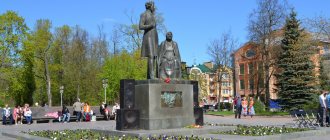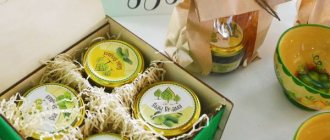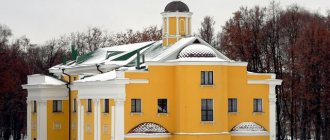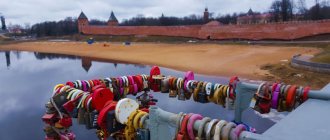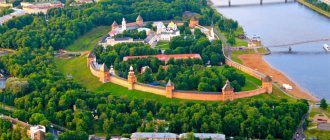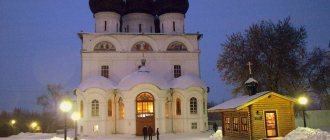His sonorous names: “Father of Russian cities”, “Mr. Veliky Novgorod”. The settlement has long and proudly worn its well-deserved crown as the owner of a constellation of the brightest attractions with historical roots. The status of a piece of UNESCO World Cultural Heritage is justified by its careful, touching attitude towards the heritage of ancient times. On a business trip, a transit trip, an excursion route woven from visits to interesting places, a pressing question often arises: what to see in Veliky Novgorod in 1 day on your own.
Among the majestic monuments of antiquity, picturesque pictures of nature on the banks of the Volkhov River, it is easy to get confused and not have time to see something. Therefore, a list of the most tempting rarities, relics, and masterpieces will come in handy. Choose what might suit your taste.
Sofia Square
The full name is Victory Square-Sofia. Its status as a key city venue for all significant events has been preserved since the reign of Catherine the Great. The open-air attraction has gathered in its open spaces a necklace of architectural masterpieces, among which stands out the building of the 20th century - the building of a former noble assembly.
On holidays, and just on weekends, there are always a lot of people on Sophia Square. Tourists love to admire the excellent view of the monumental walls of the Novgorod Kremlin from here. Citizens do not miss new exhibitions in the building of the Museum of Fine Arts, yellow as a ripe juicy lemon.
Far beyond the city limits, this place became famous thanks to the colorful action of young people, whose representatives, holding hands together, formed a chain of words: “World Peace” of such a grandiose size that it was visible from cosmic heights. A favorite place for walks for guests of the settlement: the whole center is in full view, everything is nearby, everything is at hand.
- 15 best museums in Veliky Novgorod
- Sights of Veliky Novgorod
- What to bring from Veliky Novgorod
Rules of conduct and infrastructure features
Veliky Novgorod is a developed city and differs little from other large Russian settlements. It is worth considering the following features of your stay here:
- To choose an excursion, you need to visit one of the city’s tourist centers, where you can purchase tickets and get full information about the events. For example, the tourist one, located at Sennaya Square, 5, is popular;
- in the city center there are expensive restaurants and cafes, and you can have a cheaper lunch in ordinary canteens, which are located closer to the outskirts of Veliky Novgorod;
- You should not litter on the streets, embankments and parks, because there are fines for this;
- You can buy souvenirs and books about the city in many tourist centers.
Art Museum
Landmark – Sofia Square. It is located in a picturesque pale yellow mansion with white columns and porticoes, more like an aristocratic palace. Once upon a time, the fate of the city was decided within its walls at meetings of the noble assembly. Now art lovers like to gather here. The pride of the permanent exhibition is the creations of Russian artists and sculptors of the 19th and 20th centuries.
The core of the collection originated in the 20-30s of the last century due to the expropriation of home collections of works of architecture from the local aristocratic society. Later, the masterpieces were replenished from the reserves of the Russian museum fund. The works of A. Repin, A. Aivazovsky, I. Kramskoy, A. Kuindzhi, I. Shishkin, N. Ge, V. Serov, A. Benois, V. Polenov, M. became real treasures stored outside the capital cities. Antokolsky, M. Vrubel.
The museum's arsenal contains 650 creations from different times, each of which is undoubtedly worthy of the attention of visitors. On some days, the staff prepares for guests such temporary exhibitions as pastel wonders and portraits, and does not ignore the institution and other thematic areas. Admission is paid; it is better to check the current ticket prices on the museum’s website.
Center for Musical Antiquities of V. I. Povetkin
The restorer and great connoisseur of antiquities founded a cultural center and organized a museum space, later named in his honor. Here is an exhibition directly related to music: ancient Russian instruments are presented. Their sound can be heard both as part of solo parts and in harmony. The musicians perform folk songs and motifs that were reproduced by the inhabitants of Novgorod and neighboring lands in the period preceding the formation of the Romanov dynasty. The sound of the flute and the playing of the harp here acquires the most organic auditory perception and becomes a colorful addition to the retrospective journey.
Kremlin Park
Back in the 19th century, an ancient settlement on 2 banks of the large Volkhov with fast waters had national significance and 2 legal territorial halves. In the Sofia part lived well-born people, boyars and clergy, in the Trade part there were merchants, workers and apprentices. In the “rich” region they stood up for the beauty of their native places, so they built a powerful Kremlin and surrounded it with trees, shrubs and flowers.
So, since those ancient times, the Kremlin Park has existed and is maintained in order. The area of the flora is 25 hectares. You can walk here for hours, and still find yourself in new places and corners. Park lands are adjacent to the market; when citizens come here, they like to combine useful work with a pleasant vacation. Tourists prefer to walk along the central alley and look into the shopping arcades for souvenirs.
The old name of the huge green area is the Summer Garden; after the Patriotic War of 1812, French prisoners took part in the improvement of the area. The park's premises contain the buildings of 8 churches, each of which can be visited if desired.
Citizens come and come here for the slightest reason; on holidays and weekends it is incredibly crowded. The infrastructure is a sight to behold, children's playgrounds and attractions, catering outlets, stage stages, tennis courts, a fancy fountain with sculptures, boat rentals for walks along the river, parking for cars.
Novgorod child
The oldest Kremlin-class building in Russia. Construction began in the middle of the 10th century. It served as the venue for that famous Novgorod Vecha, which was confirmed in historical chronicles. The location is the most picturesque bank of the Volkhov River framed by lush thickets of plants.
The patrimony of the bishop, even the Novgorod princes could not afford the luxury of living within the walls of the Kremlin and were called here only to participate in meetings of state importance. It has a significant difference from other architectural masterpieces in the spirit of the Kremlin’s development policy: the massive towers here have gate churches everywhere.
Detinets is the favorite of the townspeople and their pride; the pilgrimage here continues not only for tourists, but also for residents who love to spend weekends and holidays within the walls of the building. The full cycle of construction of the stone complex was completed in the 20s of the 19th century; to this day, much has been preserved almost in its original form, not without the participation of the skillful hands of restorers.
When visiting the possessions of the Novgorod Kremlin, it is worth looking into the St. Sophia Cathedral and the Vladychnaya Chamber. Visits are possible 7 days a week, to see everything here at once, it is better to come no later than 17:00; you can walk around the Kremlin courtyard until midnight.
Vladyka Chamber
Famous among artists for her colorful wall paintings. Location - the territory of the Novgorod Kremlin, visiting for tourists is free, without breaks on weekends and holidays. It was born thanks to the efforts of Russian and German masters of architectural architecture. Date of birth: 30s of the 15th century.
The history of the Vladychny Chamber is closely connected with the names of Ivan ΙΙΙ and Ivan ΙV the Terrible. The guardsmen of the last ruler of the state, after the famous feast in an ancient establishment in the Middle Ages, set out to brutally plunder the city, which guides still like to talk about during excursions. Later, for almost 3 hundred years, the Chamber of Facets was destined to play the role of a holy monastery.
Prayer services and religious Orthodox services were held within its walls for a long time. Nowadays, the Vladychna Chamber often hosts exhibitions of ancient Russian jewelry, handicrafts by Novgorod maestros, and creations of decorative and applied art.
Falcon Yard
Location – Kremlin Park. A more accurate landmark is the area between the Prince’s Tower and the Judicial Town. Tourists visit this interactive exhibition with great pleasure, if only for the reason that it has practically no analogues in Russia. The purpose of the “live” exhibition is to tell a story about the most popular type of hunting in the old days and get to know its feathered champions living in the immediate vicinity.
Fans of predators with wings can watch a magnificent photo exhibition; on some days, pets leave their “houses” to show guests what they are capable of with the help of instructors. Among the inhabitants of the mini-reserve are rare specimens of birds: honey buzzard, vulture hawk, long-eared owl, peregrine falcon, kestrel, buzzard, black kite, hobby hobby, saker falcon, eagle owl, gray owl.
Most of them do not allow people to approach them in the wild, so you can see them and photograph them only in such exclusive establishments as Sokoliny Dvor. Entrance is paid, the day off falls on Thursday.
Monument to the Millennium of Russia
Built in 1862 as a tribute to the date of proclamation of the Rurik dynasty by the rulers of the Russian state, which subsequently fell under the auspices of other Rurikovichs. The name of the grandiose structure is “Millennium of Russia”; it was from the time to which it is dedicated that the countdown of Russia began as an independent state recognized by other neighbors.
It is easy to find the majestic monument in the city; it is located opposite the St. Sophia Cathedral, and it is not possible not to recognize it. Concerning the external appearance, disputes do not cease to this day: either the “heavy” cap of Vladimir Monomakh was hidden in the meaning of creation, or a bell that is destined to broadcast to the whole world that Russia is the greatest state.
The authors of the project had a different idea: to bring together on a pedestal the greatness of two families - the Rurikovichs and the Romanovs. The height of the lower part is 9 m, the raw material is high-quality granite from Ladoga reserves. Bronze fragments were cast in St. Petersburg.
Among the main characters: Rurik himself, the pagan deity Perun, Prince Vladimir, Dmitry Donskoy, Ivan ΙΙΙ, Tsar Mikhail Romanov and his impromptu defender Dmitry Pozharsky. Of the later rulers of Rus', Peter I is represented. The great company is accompanied by a woman with a baby in her arms and a simple Russian peasant, on whose labors the well-being of the country rests.
Historical places
Novgorod Kremlin (Detinets) and all towers
Address: ter. Kremlin, 11 Website: https://novgorodmuseum.ru Entrance time to the Kremlin territory: 6.00-00.00 Main building of the museum: 10.00-18.00 Telephone:
The first mention in ancient Russian chronicles of Novgorod Detinets dates back to the beginning of the 11th century. The fortress walls, the maximum thickness of which reaches 6.5 m, reliably protect the most ancient Russian cultural monuments - St. Sophia Cathedral and the Chamber of Facets. The length of the Kremlin walls is about 1.5 km. Their height reaches 15 m.
The Kremlin towers consist of a watch area and several tiers for combat using guns of different calibers. Tents over the towers protected the warriors and contributed to the rapid dispersal of smoke.
Initially, the Novgorod Kremlin was wooden. The center of the Novgorod Republic with the princely residence was located in Detinets. At this time it was the only defensive line of the city. In the 14th-15th centuries. The wooden Kremlin was completely rebuilt. It was made of limestone and boulders. The Kremlin acquired its final appearance after the annexation of the Novgorod Republic to the Grand Duchy of Moscow in 1478. During this period, significant valuables were forcibly removed from the Kremlin to Moscow.
What distinguishes the Novgorod Kremlin from similar defensive structures of that time is the ability to conduct artillery combat. The rounded walls were built in such a way that cannonballs bounced off them without causing significant damage. Until the beginning of the 18th century. a military garrison remained in the Novgorod Kremlin.
The architectural ensemble of the Kremlin was badly damaged during the Second World War. Restoration work continues to this day.
Faceted (Vladychnaya) Chamber
Address: ter. Kremlin, 14 Opening hours: 10.00-18.00 Telephone: 8-921-730-93-92 Ticket price: 250 rubles
The chamber was built in the Western European Gothic style in the first half of the 15th century. The interest of specialists and visitors to the most ancient monument of Russian architecture is attracted by fragments of ancient painting.
The central exhibition object of the chamber is the cell of Archbishop John. The frescoes in the cell date back to the 15th century.
Under the vaulted ceilings are exhibits telling about the life of the Novgorod saints. Most of the exhibition is dedicated to jewelry art.
Gate tower of Gostiny Dvor
Address: st. Nikolskaya, 1 Working hours: 10.00-18.00 (break 13.30-14.30), day off - Tue
The tower is part of the architectural complex of Gostiny Dvor. It was built at the end of the 17th century. in the same architectural style as the gates of the Voivode's Court.
The building with an octagonal tower rises three floors and has two passage arches. The tower houses a museum that displays ancient products of Novgorod craftsmen, church utensils, etc.
Yaroslav's yard and market
Address: st. Nikolskaya, 1 Admission is free around the clock
The main architectural complex of the Trade Side. Here you can see ancient buildings and structures, including the St. Nicholas Cathedral, which has preserved examples of frescoes and a variety of ancient icons.
In the Church of St. George the Victorious at Torg, frescoes from the 14th century are displayed. In the 16th century The Church of the Myrrh-Bearing Women was erected, in the basement of which the treasury of Ivan the Terrible was kept.
In ancient times, the courtyard was the center of trade in Veliky Novgorod. Not only merchants from other cities, but foreign travelers brought their goods here. In total, the trading area contained 42 rows, and each of them sold its own product.
The courtyard also served as an additional place for the people's meeting, in case disagreements arose.
Unfortunately, not all buildings have survived to this day due to military operations and the negligence of officials. But those buildings or parts thereof that have survived deserve attention as the most ancient monuments of architecture. There are also new objects, for example, a granite fountain in the shape of a reclining disk, on which the coats of arms of the countries of the Hanseatic League are laid out in mosaics.
It’s easy to get to Yaroslav’s Dvorishche from the Kremlin - you just need to go through the arch at the site of the Prechistenskaya Tower and follow the bridge to the courtyard itself.
Kremlin Park
All the main events in the city are held right here, in the park, which surrounds the walls of the Novgorod Kremlin on three sides. In the 19th century it was called the Summer Garden, and there were 8 churches on its territory. Only their foundations have survived to this day. This place received its current name in the post-war period, at which time the trees now growing in the park were planted here.
Both townspeople and tourists love to relax here. The park has:
- children attractions
- areas for various games
- tennis court
- stage
- fountain
You can rent a boat, shoot at a shooting range, or go to a cafe or restaurant, of which there are several.
The attractions are open every day from 11.00 to 20.00, but their opening hours depend on the vagaries of the weather.
Monument "Millennium of Russia"
Address: ter. Kremlin, 4
The monument was erected opposite the St. Sophia Cathedral in 1862. The opening of the monument was timed to coincide with the centennial anniversary of Russia. At this time, Rurik was proclaimed prince of Rus'.
Every detail of the monument is filled with symbolism. The base was conceived by sculptors M. Mikeshin and I. Schroeder as a bell designed to remind descendants of the heroic past of Russia. The granite monument also symbolizes two reigning dynasties: the Rurikovichs and the Romanovs.
Each tier of the monument contains groups of characters who, in addition to the unity of the tsarist government and the church, tell about the most significant events in the history of Russia from the moment of its formation to the end of the 19th century. The monument also presents images of real historical characters who made a significant contribution to the formation of Russian statehood and the cultural mentality of the nation: Yaroslav the Wise, the emperors of Rus', Ivan Susanin, Dmitry Donskoy. etc.
After the 1917 revolution, the monument was covered with shields. During the Second World War it was partially destroyed, its restoration began a few months after the liberation of the city.
Victory Monument
Address: Sofiyskaya embankment. (territory of the Kremlin Park, on Catherine Hill)
The monument glorifies the feat of Soviet soldiers during the Second World War. It was opened in 1974.
Veliky Novgorod was liberated from the Nazis in January 1944. The Victory Monument is the only equestrian statue in the city. Under the hooves of a rearing horse, the author of the sculpture placed a broken fascist swastika. A warrior sits on a horse in a courageous pose.
Desyatinny Monastery
There are a great many holy monasteries in Veliky Novgorod, which did not prevent this particular religious institution from having the status of unsurpassed beauty. Construction began in the 19th century; serious restorations and reconstructions were carried out much later in the 20th century. The priority is a mixture of Baroque and Empire styles. The former greatness is somewhat lost these days, but there is a place for legend in the history of the establishment.
According to legend, it was built by order of the believing Princess Theodosia, mother of Alexander Nevsky, after the icon of the Mother of God “The Sign” saved the city from enemy attacks. The key Church of the Nativity of the Blessed Virgin Mary is now in ruins, but it is definitely worth a visit.
Even the elegant bell tower, the ornate fence, the refectory, the buildings where the nuns lived breathe genuine charm, cleanliness and comfort, immersed in fresh emerald greenery. Another tempting opportunity after viewing ancient relics is a visit to the Museum of Artistic Culture of the Novgorod Land, which can truly be proud of its rare artifacts.
Multimedia panorama “The Great Court and the Princely Bargain” in St. Nicholas Cathedral
Among the churches on the Trade Side there is one most outstanding one, which deserves special attention: St. Nicholas Cathedral. It is the oldest of all and the most well restored. In fact, there’s not much to do inside without a tour, but if it weren’t for the panorama.
What is the multimedia panorama “Great Courtyard”? They take you into a room, well, like a room - a tent, inside there are ordinary chairs. And the projector tells the story and shows it all around you. The presentation was made very clumsily, there are no effects, no staged or specially filmed moments. If I did this, then I would be very ashamed of such visual work, because... it is 10 years out of date.
But there is one big plus - it tells really fun facts and interesting events that you are unlikely to find. It is also here that it tells about all the churches around. This part turned out well, because... these churches are really all around and you feel as if you are looking through transparent walls.
I highly recommend the multimedia panorama; it briefly but interestingly tells about all the churches around, about this ancient area through which you are walking, about the customs of ancient Novgorod.
Another interesting fact: I was very glad that churches are slowly being restored and opened, interesting exhibitions are being created for tourists, but then I read that St. Nicholas Cathedral is included in the UNESCO World Heritage List and they were allocated $1,000,000 for restoration! Since then, several restorers have already sat down, but for such money, very little has been done and completely wrong.
The cathedral is open from 10.00 to 18.00, every day except Monday and Tuesday. Panorama time: 13 minutes, held at any time when you arrive and at least for you alone. The cost is 150 rubles per adult and 80 per student. Children under 16 years old - 50 rubles.
St. Nicholas Cathedral, and in the background the ancient trading yards begin (they talk about this in the panorama). Nowadays residential buildings and shops
Without a panorama and a tour, the cathedral is not so interesting; for the most part, restoration and photographs of all the churches in Novgorod are underway
Large article about Yaroslav's Dvorishche with all prices
St. Sophia Cathedral and belfry
The majestic, snow-white, slightly gloomy and mysterious St. Sophia Cathedral and its belfry have attracted the attention of all guests of the city since ancient times, and are generally recognized as its calling card. The landmark is the possessions of the Novgorod Kremlin. One of the wonders is the Magdeburg Gate, near which travelers always like to take pictures. Once upon a time, the holy monastery also had the Vasilyevsky Gate, but this curiosity was taken from here in the 10th century by Ivan the Terrible.
The architectural idea of the architects was aimed at creating an analogue of the St. Sophia Cathedral in Kyiv. The instant complex is crowned with 5 intricate domes, made using technology similar to the production of helmets of the ancient Russian army. The color of the surface varies, 1 golden dome is surrounded by 4 gray-lead counterparts. The current stone version of the building came into being thanks to Prince Vladimir, the son of that same Yaroslav the Wise.
He replaced the wooden version, which burned in the crucible of a huge fire. The age of the St. Sophia Cathedral can rightfully be called respectable; the date of its foundation is considered to be the 10th century. The walls of the cathedral keep many secrets; even in the times of Ivan the Terrible, caches with precious treasures were found here, one of which was the real treasury of the Novgorod department.
St. Sophia Cathedral became the tomb for many eminent people: the wife of Yaroslav the Wise, Princess Anna, their son Vladimir and his wife Alexandra, the brother and grandfather of Alexander Nevsky, a succession of local archbishops. Some of these individuals have been canonized.
Yaroslav's yard
This landmark of the city is inseparable from the Ancient Market. It received its name in honor of that same Prince Yaroslav, deservedly nicknamed the Wise. Yes, and it was moved to its current location thanks to this eminent ruler from the Rurik settlement at the very beginning of the 10th century. They always say and write about the ancient settlement that here, without even taking a step, you will find yourself close to the church.
In the necklace of curiosities of Yaroslav's Court, this is exactly the case. Among the ancient rarities on the territory are several creations of masters of architecture of the 10th-19th centuries. The “grandfather” of this constellation is St. Nicholas Cathedral, built back in 1113. Here you can admire the wonderful frescoes and openwork iconostases.
Another miracle is the Church of Paraskeva Pyatnitsa, for the construction of which overseas merchants forked out at the beginning of the 19th century. The third masterpiece is the Church of St. George at Torg, made in the format of an “octagon on a quadrangle”, and even fortified with a sub-church.
Museum of Wooden Architecture "Vitoslavlitsy"
Geolocation – the road between the city and St. George’s Monastery, in the village of Vitoslavitsy, where there have always been many miniature religious institutions in the area. The collection of masterpieces of wooden art has long become not a museum of the same type, but an entire natural and architectural reserve. Curiosities were brought from different cities and towns, restored, and prepared for display to the mass public.
The theme of the complex is mainly based on the Orthodox heritage, presenting different types and types of intricate churches made from wooden raw materials. The pearl of the reserve: the Church of the Assumption of the XΥΙ century, made in the shape of a tent according to the principle: an octagon stands on a quadrangle. Not far behind this unusual masterpiece is the Church of the Nativity of the Virgin Mary, also built in the 10th century in the village of Peredki.
Its shape is made in the form of a cross on the basement, in the possession of 3 thrones. It is impossible to pass by the tiered holy monastery in honor of St. Nicholas. Her date of birth is the XΥΙΙΙ century; she arrived in Veliky Novgorod from Vysokoy Ostrov. It is better to come here for a few hours, because it will take a lot of time to examine 22 ancient wonders in the open air. The complex is closed to visitors on Wednesday. The operating hours are different in winter and summer.
Second day
It is worth continuing your acquaintance with Veliky Novgorod on its southern outskirts, near Lake Myachino. Home to several of the region's iconic landmarks, as well as a picturesque park, you can spend the entire day in the area.
Museum of Folk Wooden Architecture "Vitoslavlitsy"
“Vitoslavlitsy” is an open-air architectural reserve. Surrounded by picturesque nature, masterpieces of wooden architecture of the Novgorod region are collected here. The name of the museum comes from the village of Vitoslavlitsy, which was located on this site in the 12th century. The place was famous not only for its natural beauty (lakes, streams), but also for its monasteries. the Annunciation Monastery has survived to this day .
The museum was founded in the 60s of the last century. 22 wooden objects were brought here from villages and hamlets of the Novgorod region. The most notable are churches of different types: the tented Church of the Assumption of the late 16th century, the cross-shaped Church of the Nativity of the Virgin from the 16th century, the tiered Church of St. Nicholas of the 18th century and others. Interesting domestic buildings include: peasant huts from past centuries, a mill from the early 20th century, a wooden forge and a stable. Inside the huts, the ancient atmosphere has been recreated - each hut has its own exhibition: “Winter Life”, “Wedding”, “Wool Felting Craft” and others. Please keep in mind that during the autumn-winter period all internal exhibitions, except for one hut, are closed to tourist visits.
Large-scale celebrations in Vitoslavlitsy take place twice a year - on Christmas and Trinity Sunday. Traditional Russian games are organized, folklore groups perform, and competitions are held. At fairs dedicated to the holiday, you can purchase handmade products from Novgorod craftsmen.
More details: Museum of Folk Wooden Architecture “Vitoslavlitsy”
Museum of Folk Wooden Architecture “Vitoslavlitsy” Photo: © Svet-lanka
Yuriev Monastery
The monastery, located next to the Vitoslavlitsy museum, is one of the oldest in Russia. It was founded in 1030 by Yaroslav the Wise. By the 12th century, St. George's Monastery became the state monastery of an independent state - the Novgorod Republic. And by the end of the 15th century it became one of the richest monasteries in Rus'. The monastery began to decline in the 18th century. During the Soviet period, after the war, the territory was residential: there were houses, a post office, a technical school, and a store. The monastic community was created again only in 1995.
The main temple of the Yuryev Monastery is St. George's Cathedral. The temple was consecrated in 1130. In the first centuries of its existence, the cathedral was a tomb for many princes: Rostislav, Izyaslav and Alexander Nevsky’s brother, Prince Fyodor Yaroslavich. The fresco paintings from the 12th century have survived in fragments, but most of the interior decoration dates from the 19th century. The Cathedral of the Exaltation of the Cross is notable for its blue domes with 208 stars. Other buildings of the monastery include: 19th century Spassky Cathedral churches of the Archangel Michael and the Burning Bush icon of the Mother of God .
More details: Yuriev Monastery
St. George's Monastery Photo: © Sergey Arkhipkin
Route around Veliky Novgorod for 1 day
- Grand Cascade in Peterhof
- The Berlin Wall is an ominous monument to the Cold War
- Loch Ness in Scotland
- Self-guided tour of Imperial Rome
- What to bring from Germany
- To Cappadocia on your own
- Shell house in Mexico
- Petrin Hill - Prague from a bird's eye view
- What to see in Rhodes by car - 20 most interesting places
- What to see in Cologne in one day - 15 most interesting places
- Burj Al Arab, UAE
- St. Petersburg 5 star hotels in the center with breakfast
Geography and climate
Veliky Novgorod is located in the north-west of the European part of Russia, 150 km from St. Petersburg and 550 km from Moscow. The city was built on the Priilmenskaya lowland on the Volkhov River, not far from its source, which is Lake Ilmen.
Novgorod has a temperate continental climate, which is characterized by relatively cold, often snowy winters and cool, rainy summers. Autumn is also quite rainy here. Winter in Novgorod usually lasts from November to March.
Churches of Veliky Novgorod
